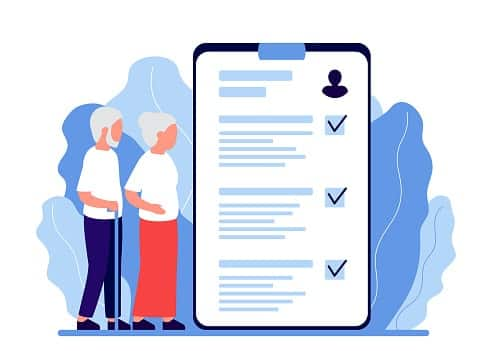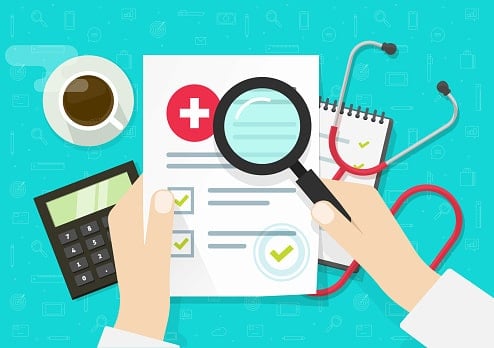- Who needs disability insurance?
- What is a long-term disability?
- Is group disability insurance enough?
- Differences between long-term and short-term disability insurance
- What’s an elimination period?
- Long-term disability insurance riders
- How much does long-term disability insurance cost?
- Pre-existing conditions and long-term disability insurance
- Pregnancy and long-term disability insurance
- How to apply for long term disability
Who needs disability insurance?
Anyone with a job can benefit from disability insurance. That’s especially true for self-employed people, who would lose both personal and business income if disabled. Doctors and dentists are the biggest buyers of long-term disability insurance.
People have insurance on their cell phone, but don’t protect their incomes. Disability insurance is valuable to anyone who gets up each day and makes a paycheck,” William Olmstead, vice president of Financial Balance Group, says.
What is a long-term disability?
Companies and policies vary on specifics, but overall a disability is when you’re not able to do your job.
Your policy will dictate the degree of the disability. For instance, you may be able to collect partial payments if you have a partial disability that restricts your hours. Other policies may limit payouts to full disability claims.
Is group disability insurance enough?
Many employers offer disability insurance as part of its benefits package. The two benefits of work-based disability insurance are that it’s often free and you don’t have to go through a qualification process. So, if you’re uninsurable, these disability policies can help.
Employer-sponsored disability insurance often doesn’t provide enough coverage, though. You probably still need a supplemental individual policy. Here’s why:
- Employer-sponsored disability insurance payments are lower than an individual policy.
- You lose coverage when you change jobs or if the employer drops coverage.
- An individual disability policy allows you to add riders.
- Bonuses and commissions might not be part of a group plan.
- If you collect a disability payment from an employer-sponsored plan, you’ll have to pay taxes on that amount. You don’t pay taxes on individual policy payments.
Even if you have an employer-sponsored plan, a supplemental disability policy can provide you with added protection.
Differences between long-term and short-term disability insurance
There are two types of disability insurance: long-term and short-term.
The individual long-term disability insurance market is much larger. There aren’t many individual short-term options, but employers may offer short-term protection.
Let’s take a look at the difference between the two types of policies:
| Base income replacement | Benefit period | Elimination period | |
|---|---|---|---|
| Long-term | Usually up to 60% | Can last until end of disability or reaching certain age | Usually three to six months |
| Short-term | Usually up to 70% | Usually up to six months | Usually a couple of weeks |
Five states additionally offer short-term disability plans: California, Hawaii, New Jersey, New York and Rhode Island. These states allow you to tap into disability funds if you become disabled for up to six months.
There’s also workers compensation insurance. These policies help pay part of your income if you become disabled in a work-related injury.
Also, there is another long-term disability option. People who pay Federal Insurance Contributions Tax are eligible for disability insurance through the Social Security Administration.
You have to meet requirements to receive those payments. The process can be time-consuming and the payments are minor compared to long-term disability insurance. The monthly maximum for an eligible person is $783 in 2020.
These payments don’t kick in until after six months of a disability. People who are ill can also request compassionate allowances. These allowances speed up the approval process for severely-disabled people.
What’s an elimination period?
The elimination period is the time before you can start receiving disability benefits. You’ll have to wait through the period after becoming disabled before the company pays a disability claim.
Olmstead said you have to be under physician care to collect disability payments. The doctor will communicate with the insurer to figure out when you can return to work.
The longer the elimination period, the lower your rates. The insurer won’t chip in any money if the elimination period is longer than the time you’re disabled.
You usually can decide between 30-, 60-, 90-, 180- or 365-day elimination periods. A good idea to keep down costs is to choose a higher elimination period and put aside enough money to help you if you become disabled.
For instance, try to allocate three months’ salary and choose a 90-day elimination period rather than pick a more expensive 60-day period.
Long-term disability insurance riders
Individual long-term disability policies allow you to add extra protection.
Olmstead said the five most used types of riders are:
| Type of rider | What it does |
|---|---|
Enhanced partial disability benefit | It allows for partial disability payment if you become partially disabled. The vast majority of long-term disability policies have this rider. |
Cost of Living Rider (COLA) | This rider increases the policy's monthly benefit each year with a minimum benefit adjustment of 3%. The addition helps make sure your disability benefits don’t fall behind after years of inflation. |
Future increase option | Lets you buy more long-term coverage later without having to go through the application process again. |
Basic catastrophic | This provides more money if you suffer a severe illness or injury. You could use the funds from this rider to help pay for in-home care. |
Automated benefit enhancement | Increases your policy by 4% annually for six years. This rider replicates salary increases without you needing to update your policy. |
Two other long-term disability riders are:
- Return of premium -- The rider gives you back your premiums if you don’t need disability benefits and your policy expires. These policies cost significantly more than regular disability policies.
- Waiver of premium -- This waives premiums for 90 days if you’re disabled.
How much does long-term disability insurance cost?
Long-term coverage price varies but is often between 1% and 3% of your income. High-income people may pay more than $10,000 in premiums each year. Olmstead said the average disability policy costs about $2,400 annually.
An insurer bases costs on:
- Income
- Age
- Health status
- Gender
- Smoking status
- Occupation
The insurer also considers policy when setting cost. These items in a policy affect price, too:
- Benefit period -- The benefit period is how long you could collect payments. You can choose the number of years or age, such as 65, when the policy ends.
- Elimination period
- Riders
- Payments -- A level premium stays constant. Graded premiums are lower at first but increase over time.
Another vital factor is how a policy defines a disability. A policy's disability definition can be:
- Totally disabled -- You're not able to work your job.
- Partial disability -- You’re not able to do the job at the same level as before the disability. These have lower payouts than total disability.
- Presumptive disability -- You can skip the elimination period. This may happen if you lose hearing in both ears, speech, sight or use of a hand or foot.
The broader your policy’s disability definition, the more you’ll pay for a policy.
One last factor is whether your policy calls for own occupation or any occupation disability:
- Own occupation protection will help you if you can’t perform your specific job. You can collect payments even if you could do a different job.
- Any occupation is when you can’t perform the tasks at any job. This is less expensive but also harder to get claims approved.
Here’s an example. Let’s say a surgeon has severe damage to her hand and can no longer perform surgeries, an “own occupation” policy would likely approve the disability claim.
However, if that same doctor had “any occupation” and could, in theory, change specialty, such as moving to primary care, the company may deny the claim.
Pre-existing conditions and long-term disability insurance
Your health plays a role in both whether you get approval or if the company adds policy exclusions. Exclusions mean you can’t get disability payments if you become disabled because of those issues.
Policy exclusions can include:
- Cancer
- ALS
- Uncontrollable diabetes
- Back pain
- Obesity
- Mental illness, such as anxiety and depression
- Alcohol or drug-related issues
Pregnancy and long-term disability insurance
Women who become pregnant can’t buy a long-term disability policy covering pregnancy. Olmstead said his company receives calls regularly from pregnant women looking to get long-term coverage related to their pregnancy.
However, long-term disability companies consider pregnancy a pre-existing condition. So, the policy won’t cover pregnancy-related disabilities.
You can still buy a policy, but the current pregnancy and any complication won’t be covered.
If you bought the policy before becoming pregnant, though, the policy may cover pregnancy-related complications if the condition prevents you from working. That said, the policy won’t help you when you go on maternity leave.
Also, the policy may not cover other pregnancy-related issues. For instance, if you suffered a miscarriage, the insurer may exclude future miscarriages in any disability payments.
Check with your employer if you’re pregnant and you’re looking for disability protection. Employers may offer short-term disability insurance for maternity leave. You won’t be able to find that policy on an individual market.
How to apply for long term disability
When deciding on a long-term disability policy, you should ask yourself the following questions:
- How much do you need if you can’t work?
- Are you eligible for employer-sponsored disability insurance, which allow you to get a smaller individual policy?
- How long is the benefit period?
- What elimination period do you want?
- Are the premiums level or can the insurer change the premiums during the life of the policy?
- What riders make sense for you?
Once you’ve answered those questions, you can work with the insurer to get a long-term disability insurance plan that works best for you.
Applying for individual long-term disability coverage is similar to applying for life insurance. You’ll have to fill out a form about your health history and status.
You’ll also need to get a medical exam with blood and urine tests. The long-term disability company will take the information and classify you as standard or substandard. The insurer then decides whether to insure you, how much to charge and any possible exemptions.
No matter what long-term disability policy you decide, make sure to shop around to find the company that’s right for you.




